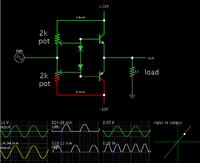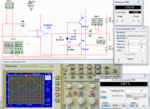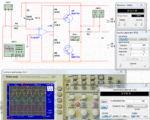ROCKET SCIENTIST
Member level 3
Hello guyz,
How are you all? Some days ago I've bought a mini 2 inch subwooofer speaker which has the rating of 12 ohms and 8 watts printed on it.
I wanna make a nice sound system for home use. I'm new to design a class B amplifier. Though I've done some study on class A, B and AB, I'm still confused about where should I start. :roll:
Please, suggest me some design techniques. What should be the power supply? Does it have to be dual rail or single rail?
I don't wanna use batteries. Rather I can use a 12-0-12 Transformer which I already have in my hand. Should I use +-12V or the total 24V? I've bought a pair of TIP41C and TIP42C transistors for the push-pull section. Also, I have some commonly used transistors like 2N2222A, BC547 and one TL082 OP-AMP too. :lol:
Waiting for suggestions from experts. Thanks in advance. :-D
Rocket scientist.
How are you all? Some days ago I've bought a mini 2 inch subwooofer speaker which has the rating of 12 ohms and 8 watts printed on it.
I wanna make a nice sound system for home use. I'm new to design a class B amplifier. Though I've done some study on class A, B and AB, I'm still confused about where should I start. :roll:
Please, suggest me some design techniques. What should be the power supply? Does it have to be dual rail or single rail?
I don't wanna use batteries. Rather I can use a 12-0-12 Transformer which I already have in my hand. Should I use +-12V or the total 24V? I've bought a pair of TIP41C and TIP42C transistors for the push-pull section. Also, I have some commonly used transistors like 2N2222A, BC547 and one TL082 OP-AMP too. :lol:
Waiting for suggestions from experts. Thanks in advance. :-D
Rocket scientist.


